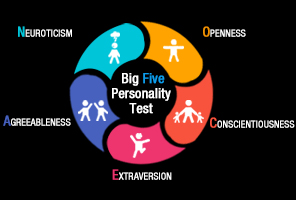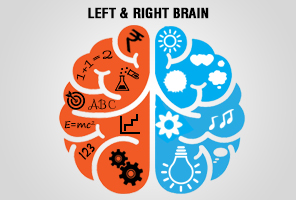
Overview
Test Description
It is very important to understand if child learns better by hearing, seeing, or moving information as a part of processing it. Every child’s learning style is either or a combination of auditory, visual, or kinesthetic.
The Visual Auditory Kinesthetic learning styles model provides a robust and established way to understand and explain learning styles.
The VAK learning style uses three main sensory receivers: Visual (Seeing), Auditory (Listening) and Kinesthetic (movement) to determine the dominant learning style(s).
There are no good or bad learning styles and no particular learning style is better than the other; it is all about personal preference and what works best for the individual.
Visual Learning Style (Learn through Seeing)
These learners need to see the teacher’s body language and facial expression to fully understand the contents of a lesson. Children with Visual Learning Style:
- can easily visualise complex scenarios, images or ideas without reference
- are imaginative
- Enjoy art & aesthetics
- Are good with words and excellent at spelling
- Take frequent notes
- Can revise well through colour coordination, mind maps and flashcards
- Love graphs, maps, diagrams, flowcharts and written instructions
- Have a tendency to get easily distracted by visual stimuli such as sitting beside a window or pop-ups on a computer
Auditory Learning Style (Learn through Listening)
They learn best through verbal lessons, discussions, talking things through and listening to what others say. Auditory learners interpret meanings of speech through listening to the tone of voice, pitch and speed.
Auditory learners absorb information primarily by hearing and:
- Follow verbal instructions easily
- Understand and process information by talking about it
- Would prefer to record a lesson or lecture rather than take notes
- Are good at oral presentations
- Prefer to learn with music on, provided it is not distracting
- Are good in group and panel discussions
- Are easily distracted by auditory stimuli such as background noise
Kinesthetic Learning Style (Learn through moving, doing and touching)
Kinesthetic learners learn best through hands-on approach and actively exploring the physical world around them. They struggle to sit still for longer periods and have a strong need for activity.
Kinesthetic learners need physical activity and movement to absorb information. They:
- Can solve problems hands-on
- Are good at sports and physically well-coordinated
- Enjoy performing arts or dance and expressing through physical movements
- Struggle with abstract or conceptual topics
- Have a good sense of direction
- Excel at subjects involving practical work like construction, cooking and engineering
- are restless or fidgety in the classroom
Instruction
There are 3 options for each question.
Please select the most appropriate choice to match your true self.
There are no time constraints, so take due time and understand the question properly before responding.
Test Requirements
There are no special equipments required for the test.
You need a computer or a mobile device to take the test and respond to the questions.
There are no other need for any pens, pages or pencils.
Test Outcomes
The test provides a detailed report on the learnng style of your child, which can help in creating proper learning environment for the child and ensure the child absorbs the knowledge to the best of his abilities.
The Visual Auditory Kinesthetic learning styles model provides a robust and established way to understand and explain learning styles.
Feedback
- Stars 5
- Stars 4
- Stars 3
- Stars 2
- Stars 1
5.0
Rating
Reviews
Related Test


